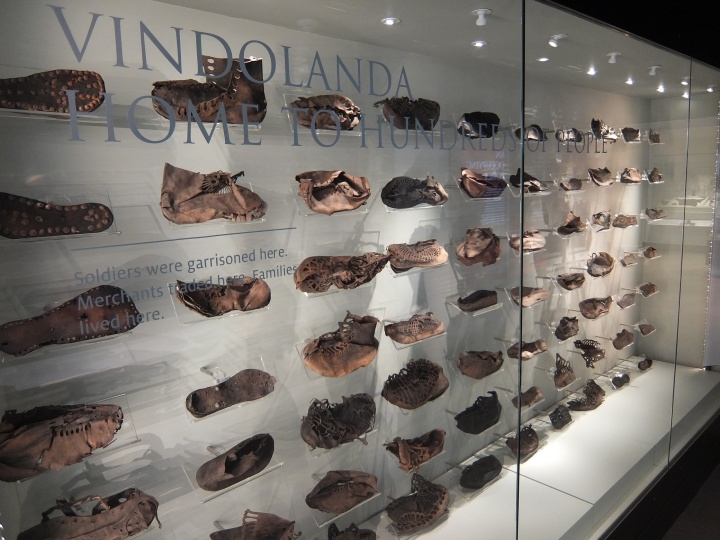
There are not many active archaeological sites where alongside an excavation you can see a museum dedicated of the finds that have been made. Vindolanda is one such gem. Whereas the majority of museums do have a focus on their local surroundings, Vindolanda’s museum focuses purely on the onsite Roman Fort that boasts over 300 years of occupation.
When you enter the site you are instantly given a perspective of what the fort will have looked like in its prime in the form of an interactive site model that, at the press of a button, explains some of the main features of the fort. This takes away some of the confusion that often occurs when visiting what essentially appears to the untrained eye looks like a muddled up ruin. From the model you quite quickly gain an idea of the layout of the site and you can then wander through taking in the many informative and well placed text panels that give further information as you go. The museum is located just beyond the archaeological site in a picturesque little valley with its very own stream and reconstructed Roman temple.

The museum itself is a showcase of wonderful discoveries. Due to the incredible conditions on site materials that would normally have biodegraded have instead been preserved. This is instantly presented via the wall of sandals that greet you. Faced with multiple examples of such tangible objects that all visitors can instantly associate with, brings home the importance of this site with the very first case of objects on display.
I would argue that coins are one of the hardest artefacts to display. They are small, it’s very hard to see detail unless they are in pristine condition and any associated object label is going to be at least 10 times a coins size – all factors that do not make for an attractive display. At Vindolanda the coins are displayed exceptionally well. Arranged in pleasing lines and groups, they shine against a black background. In the middle of the case there is a video that shows close ups of the coins. Rather than static photographs these images move serenely across the screen, supported by associated informative text. This coins room also features a soundscape of drawn out chords, creating the feeling you’re looking at something holy or mystical. I usually find such soundscapes overdramatic, but in this case it worked, although I imagine that if you were spending a long period of time in this space it might drive you slightly mad.
The next section of the museum focuses on finds grouped by themes, from everyday life at the fort to beauty and medicine. It features some incredible objects, from finely worked glass to pottery. This section also includes three ‘Examination Rooms’, which allow visitors a behind the scenes glimpse into finds preparation and organisation. The rooms looked slightly like they had been staged with interesting artefacts on the tables, but visitors always appreciate the opportunity to see aspects from behind the scenes and these rooms allow this.
The focus then turns to the Vindolanda tablets, key treasures that have been discovered on site. A video informs as to how the tablets are processed, from being found in the ground to photographing and reading, which is a really captivating process. There is a display that discusses highlights in the letters, giving visitors the chance to read the texts in more detail. Finally there is a room that displays a number of the tablets. The space is darkened to help preserve the letters but the walls are lit with the real names of individuals mentioned within the texts as well as any extra information that is known about them. In the centre of the room the case that contains the letters projects an image of a letters into the case while a voice reads out the letters contents, this happens for each letter in turn on a loop. The fact that you can walk around this case allows a constant flow of people around the letters.
Overall the museum is interesting. Unlike most places, this site allows people to come and actively participate in historical and archaeological research. The case at the end of the museum that displays finds from last year’s excavations clearly shows that discoveries are still being made and the understanding of the site is still growing, which is very exciting. It’s hard to comprehend the distance in time between us and the Romans who lived at this fort, but the fact that this museum can display some of their names and their written words mere meters from where they lived, brings into sharp perspective that they were as real and alive as we are.







This makes me want to jump in the car and visit it immediately- fabulous x
LikeLike